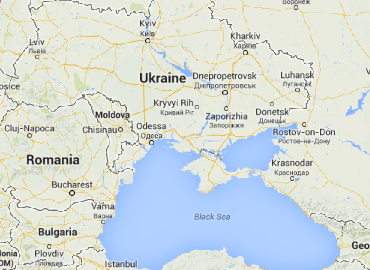Last week clashes between pro-Russian and pro-Kiev protesters came to the usually quiet and ethnically diverse port city of Odessa. While calm has now returned to the city after three days of rioting, the violence that occurred last week serves as a reminder of how fragile Ukraine has become since the Euromaidan protests started last year and how quickly things can escalate in the increasingly fragmented eastern and southern provinces.
Who started the violence on May 2 depends on which media accounts you read but it appears a small pro-Russian group assaulted a rally of football Ultras holding a rally for Ukrainian unity. Both sides were armed which led to several people in the crowd being shot, including at least three journalists who were covering the clashes. When the pro-Russian activists retreated to a local administrative building, the rival crowd retaliated with Molotov cocktails that started a deadly fire, trapping and killing over 30 inside the building. The total death toll reached at least 46 with many more injured in a city that has seen numerous rival protests, but no violence until now.
The developments in Odessa are just the latest to demonstrate how precarious the situation in Ukraine has become. In the days following the violence pro-Russian crowds attacked the city’s police station to free arrested protesters and the government sent in elite National Guard units to restore order and maintain control over some of Ukraine’s last remaining sea access after the secession of Crimea. Elsewhere in the east, Ukrainian troops continued to clash with a pro-Russian militia that took control of the city of Slovyansk resulting in casualties on both sides and pro-Russian mobs attacked government buildings in Donetsk as the self-proclaimed “people’s government” advocates for a referendum on the status of the region similar to the referendum Crimea held in March. Descriptions of the fighting throughout Eastern Ukraine is increasingly not about protesters and activists against security forces but illustrate scenes straight out a war zone complete with heavy machine guns and tanks firing on organized militias and less organized mobs.
Those scenes may portend a new reality for Ukraine. As the former US Ambassador to Russia Michael McFaul warns of a possible full Russian invasion, the acting president of Ukraine Oleksandr Turchynov told Ukrainian TV that Russia was already at war with the country. Fears of a civil war come as the country prepares for national elections on May 25 to elect a president after the Euromaidan protests forced former President Viktor Yanukovych from power in February. While it was originally hoped that the election would mark the end of the crisis that started with mass protests last November, it now appears that if the election does occur, it may make tensions far worse in a country where there are no clear-cut sides.
What is clear is time is running out for Ukraine to find a viable solution while avoiding a much wider conflict. With thousands of Russian troops stationed on the border in both the east and south in the breakaway Moldovan region of Transnistria, each day of violence inside Ukraine brings the possibility of a tipping point that will be difficult to come back from. The violence in Odessa may be one more step towards that line or may wind up being an isolated event, but it serves as a reminder of how high the stakes are with each new protest as Ukraine seeks for a common identity that can unite all of its different ethnic groups.
